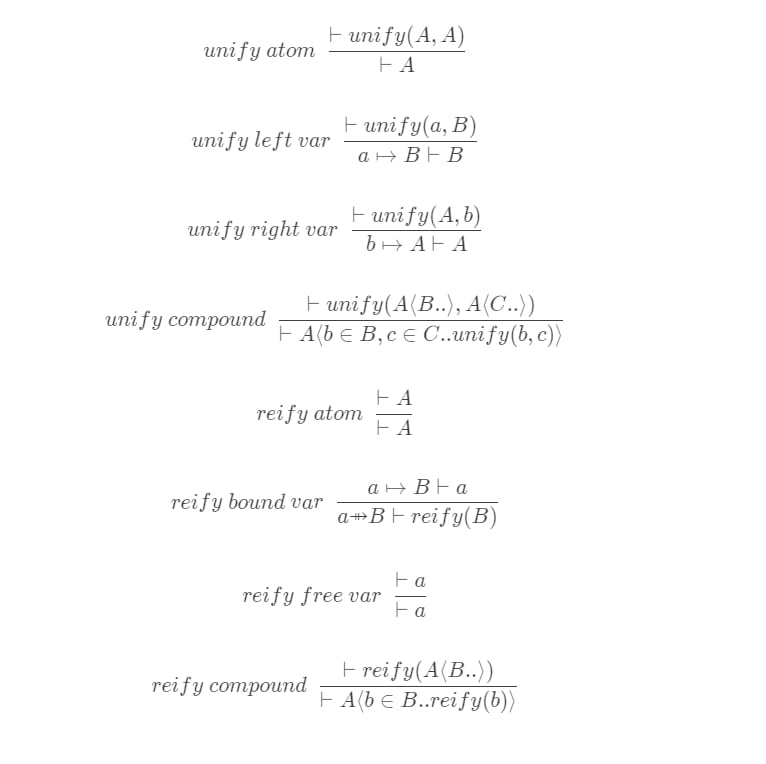14 stable releases
| 1.0.13 | Jan 6, 2024 |
|---|---|
| 1.0.12 | Jan 3, 2024 |
| 1.0.11 | Dec 25, 2023 |
| 0.0.1 | Dec 5, 2023 |
#6 in #normalization
176 downloads per month
48KB
329 lines
Relog
An implementation of several strongly-normalizing string rewriting systems
Relog (Reduction Logic) Flavor
a = Int;
List<a>
---output----
List<Int>
A<b,C<d>> = A<Int,C<Bool>>;
R<b>
---output-------------------
R<Int>
A<b,c> := R<c>;
A<B,C>
---output----------
R<C>
Print<"hello world">
---output-----------
[stdout]hello world
0
For<n,99,0,
Print<"{n} bottles of beer on the wall
\r{n} bottles of beer
\rTake one down, pass it around
\r{n} bottles of beer on the wall">
>
---output------------------------------
[stdout]99 bottles of beer on the wall
...
0
Relog Syntax
Relog is a type system, not a programming language. It is not Turing Complete, it is Strongly Normalizing.
The basic syntax of a Relog program is defined by unifications, followed by a result.
Unifications have a left-hand-side and a right-hand-side separated by an equal sign with a semicolon after each unification:
Pair<a,b> = Pair<Int,Int>;
Results are a single term and can reference unification variables bound by previous actions:
Pair<a,a>
An example program might represent the application of a function a -> Maybe<a> with argument Int which would look like below:
a = Int;
Maybe<a>
when running this program the unification will bind Int to a and return the result Maybe<Int>.
Relog Type System

$$apply \ \ \frac{unify(f,fx)⊢r}{f⇻r⊢reify(apply(r))}$$